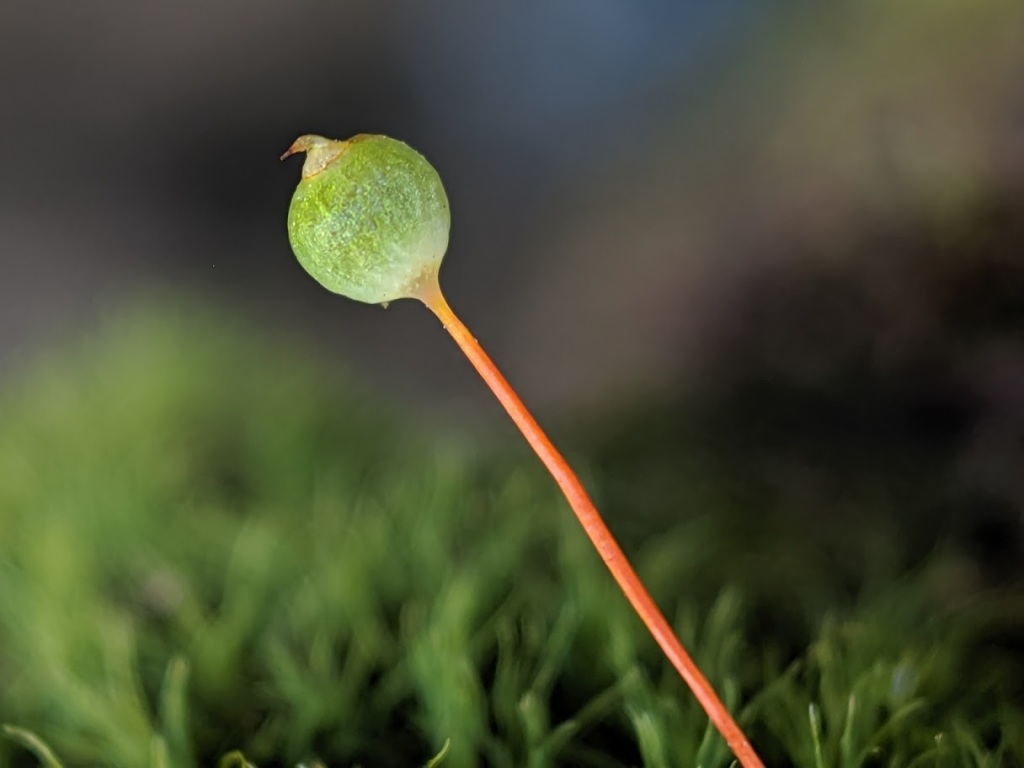Bartramia hampeana subsp. hampei
(Mitt.) FransénDioicous. Loose tufts on soil or rock, dull brownish or yellow-green. Stems 3–8 mm long, irregularly branched, with moderately dense reddish brown rhizoids at base. Leaves erect to erect-spreading or occasionally wide-spreading when moist, erect and appressed to erecto-patent when dry, with an oblong to obovate hyaline sheathing base and linear-lanceolate green lamina, 1.2–5.5 mm long, 0.2–0.5 mm wide; apices subulate; costae percurrent to short-excurrent as serrate awn; margins denticulate with single or double teeth, plane, without a distinct border; lamina cells in subula rectangular to long-rectangular, 13–50 μm long, 4–10 μm wide, bistratose, unistratose at margin, prorate; laminal cells in sheathing base linear, hyaline, 36–200 μm long, 7–17.5 μm wide, unistratose, smooth. Setae 2.9–14.3 mm long, yellowish, smooth. Capsules erect to inclined, subglobose, symmetric, 0.8–2.2 mm long. Peristome absent or occasionally a short membrane. Operculum conic to conic-apiculate.
GGr, DunT. Widespread along the Great Dividing Range mostly in drier rocky areas, especially on the northern slopes, but occasionally also in drier rocky areas to the south of the Great Dividing Range. Also WA, SA, NSW, ACT and Tas.
 Spinning
SpinningSynonyms
Bell, G.H. (2006). Bartramia. Flora of Australia 51: 249–256.


